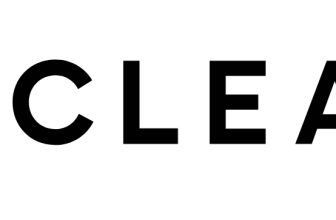
Phrases apply; see the web bank card utility for full phrases and situations of provides and rewards.
Whether or not you’re searching for a brand new summer time wardrobe, shopping for train gear, reserving journey, or making many different purchases both in-store or on-line, you possible have extra methods to pay than ever earlier than. Money and checks could also be fading, however along with rising bank card utilization, customers even have new choices like Purchase Now, Pay Later (BNPL) providers.
Recently, nonetheless, bank card suppliers have additionally began to supply pay-over-time choices which can be just like BNPL providers, whereas some BNPL suppliers have additionally launched bank cards.
What’s BNPL?
Because the title suggests, BNPL permits customers to purchase one thing now whereas paying for it over time, usually break up into 4 equal funds over six weeks, though the phrases could range relying on the BNPL supplier and the buyer’s alternative. In lots of instances, these installment funds don’t incur curiosity fees, however some BNPL loans have origination charges, and also you may need late charges or credit score rating penalties for missed funds.
Almost half of U.S. customers have used BNPL providers, reminiscent of Klarna or Affirm, and this utilization is much more pronounced amongst youthful customers, with 64% of Gen Z having BNPL expertise, in response to a LendingTree survey.
For a lot of customers, BNPL is an interesting various to bank cards as a consequence of its comfort and lack of curiosity fees, in response to Federal Reserve analysis. Nonetheless, Shopper Monetary Safety Bureau (CFPB) analysis finds that BNPL customers are inclined to additionally carry extra debt, reminiscent of from bank cards, suggesting that some customers are turning to BNPL to finance much more than they historically may — or maybe ought to.
How are the strains between bank cards and BNPL blurring?
BNPL and bank cards have all the time had the similarity of permitting you to buy one thing now whereas paying for it later. But the distinction has sometimes been that bank cards have one specific fee date the place you should pay for the merchandise (and some other purchases from that assertion interval) in full, in any other case curiosity accrues, whereas BNPL splits the fee up into a number of smaller chunks, with out curiosity.
Nonetheless, bank cards have more and more been providing fee plans that let you break up a selected buy up into a number of equal funds over a number of months. As an alternative of charging conventional curiosity, these fee plans usually include mounted month-to-month charges. That may make them costlier than some BNPL choices, although you must intently evaluate all of the charges which may not all the time be simple to decipher at first look.
That stated, whereas BNPL utilization has been rising steadily, the proportion of those that have transformed a bank card buy into an installment plan has been comparatively low and never modified a lot 12 months over 12 months, says David Shipper, strategic advisor at Datos Insights, an advisory agency that gives information, insights, and advisory providers to corporations inside the monetary providers, insurance coverage, and retail know-how industries. “In the end, utilizing BNPL to make the acquisition is simple, whereas changing a bank card buy to a time period mortgage after the acquisition just isn’t,” he says.
One upside, although, is that you just may choose to deal with every part by way of one bank card supplier, as an alternative of juggling bank cards alongside BNPL loans from a separate service. Bank cards additionally may need stricter controls about how a lot or what you’ll be able to finance by way of installment funds, which some customers may choose as a option to forestall them from going overboard on BNPL.
In the meantime, BNPL suppliers are more and more transferring into the normal bank card house. For example, Klarna lately launched a bank card that provides customers versatile fee choices, together with installment plans or the extra typical end-of-month fee.
Some BNPL suppliers like Zip additionally supply digital playing cards as a manner for retailers to simply accept BNPL funds, even when the shop just isn’t arrange for that ordinarily. The fee phrases are nonetheless usually the identical as they’re for conventional BNPL, however the fee expertise on the level of buy may look extra like trying out with a bank card.
Selecting between BNPL vs. bank cards
Whereas BNPL suppliers and bank card corporations are beginning to look extra related, that doesn’t must make the selection tougher for customers.
“Relatively than complicated customers, this convergence shifts their focus from product kind to model expertise and worth,” says Sunil Sachdev, SVP, head of embedded finance at Fiserv, a frontrunner in offering know-how options and providers to the monetary providers business.
In different phrases, because the strains blur, it’s not a lot about selecting between BNPL vs. bank cards however quite selecting amongst monetary providers corporations that supply what customers are searching for, factoring in charges, rewards, person expertise, and so on.
“The fee autos customers select come all the way down to who understands their habits, who provides contextual incentives, and who helps customers funds successfully,” says Sachdev. “In the end, your best option is the one that provides transparency, management, and worth in a manner that aligns with the buyer’s way of life.”
So, when you wish to rigorously take into account what fee choices align together with your monetary wants and preferences, you don’t must get too caught up in whether or not that technically means utilizing a BNPL firm or a extra conventional bank card supplier. Sooner or later, that distinction may even fall away fully.
“Over time, it’s doable that BNPL, as a stand-alone product issued one buy at a time, could grow to be out of date, and playing cards would be the major technique for activating these merchandise. The largest query might be whether or not the cardboard is issued by a fintech like Klarna or PayPal, or by a significant financial institution reminiscent of American Specific or Capital One,” says Shipper.






